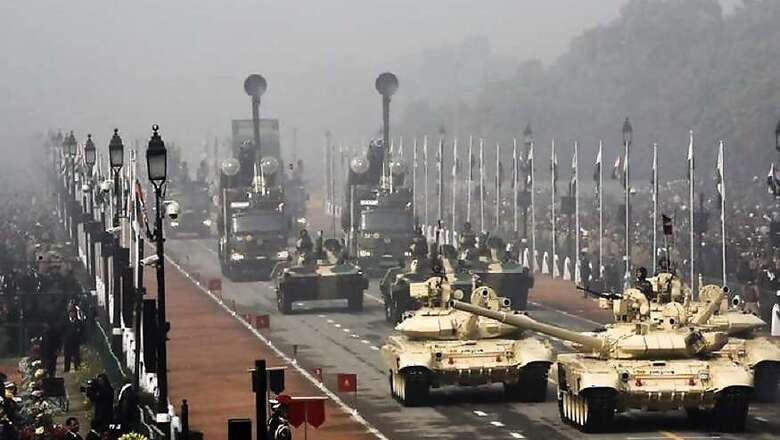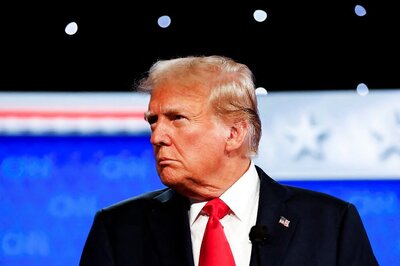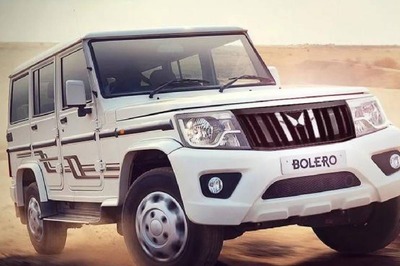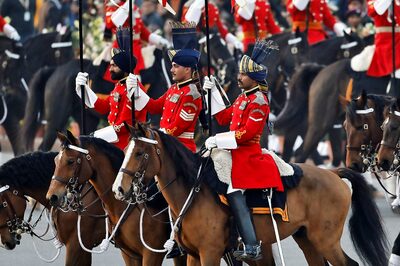
views
“Do you foresee India fighting a full-scale conventional war in the near future?” is a question often asked of me during informal interactions. My reply is generally in the negative, and the next question which inevitable follows is, “Then why is the Indian military always clamouring for a larger defence budget?”
Taken at face value, there is some justification in this argument. India’s defence budget is the fifth-largest in the world, and military expenditure certainly impacts on development programmes which are aimed at lifting India’s 224 million people out of poverty. Under these circumstances, it is also politically expedient to suppress defence spending.
However, we must also consider the larger question of India’s future trajectory in the world order. To be recognised as a major global player, India has to maximise its national power. A state’s national power is a combination of military, economic, technical, demographic and soft power. These are all important for a nation, but as John J. Mearsheimer, the author of the offensive realist theory, points out, “In international politics...a state’s effective power is ultimately a function of its military forces and how they compare with the military forces of rival states.”
I am not underplaying the importance of economic strength because without wealth, military power cannot be built. But wealth by itself does not bring global or even regional dominance. Japan is a clear example. Despite being the second largest economy in the world, it was never considered an international power because of its small military and the outsourcing of its security to the Americans. On the other hand, Soviet Union, with its military might, was one of the two superpowers. Even today, Russia with a GDP which is less than one-tenth of the United States, is posing a challenge to the latter in Europe and Syria. China’s economic rise was seen largely as peaceful until the time it started significantly upgrading its military capability.
Military power is meant not only for fighting wars but also for deterring them. President Roosevelt called the U.S. Navy as, “an infinitely more potent factor for peace than all the peace societies of every kind and sort.” A strong military enhances international credibility and strengthens a country’s position in bilateral and international negotiations. It enables a country’s leader to impose his will on the adversary.
China has been India’s main rival and for decades has sought to undermine India’s influence. In his book, The Grand Chessboard, published 20 years ago, Zbigniew Brzezinski wrote, “Geography is...an important factor driving Chinese interests in making an alliance with Pakistan and establishing a military presence in Burma. In both cases, India is the geostrategic target. Close military cooperation with Pakistan increases India’s security dilemma and limits India’s ability to establish itself as a regional hegemon in South Asia and as a geopolitical rival to China.”
Even as China has followed a remarkably consistent geostrategic approach, India’s security focus has remained inward looking, perhaps due to the many insurgencies which the country has faced since its independence. Therefore, the political and bureaucratic elite have tended to see the employment of Indian military power either for tackling internal conflicts, which is being successfully done, or for direct war fighting, which is today considered unlikely. The military leadership, isolated from decision making, has been unable to present a coherent and convincing plan on future force structures and capability development.
As a result, years of financial neglect have chipped away at India’s military capability. The problems in the three services are too well known to warrant a repetition here. Despite this, the prevailing view in the country’s leadership appears to be that the military will have to live with the current budgetary levels. This will seriously impact national security in the long run. The Border Roads Organisation could be transformed into the most efficient unit in the country but strategic roads to the Chinese border will continue to face delays unless the annual allocation of funds for roads is significantly increased.
China’s defence budget is already three times the size of India’s and is set to grow to four times by 2020. Unless measures are taken by India, this gap will continue to increase and disparity between the military capabilities of the two countries will become too large to be bridged. This disparity will obviously impact on the future of India-China strategic balance.
To be fair, the government is not completely to blame. The three services also need to take a hard look at their current force structures, new technologies and the changing nature of warfare. There is too much focus on numbers — of squadrons, ships, tanks, divisions — rather than capability. This has pushed up revenue expenditures, particularly in the case of Army which in the last budget had only 17% of its total allocation for capital purchases.
Manpower has become the main focus. The redeployment of about 57,000 officers and other ranks, as recommended by the Shekatkar Committee, is touted as a big and “far-reaching” reform process being initiated in the Army for the first time after independence. There is little visible action in the fields of information warfare, cyber warfare, Artificial Intelligence (AI), autonomous systems, and robotics, all of which will have a major impact on future wars. The American military is estimated to be funding approximately 80 per cent of all AI research in the United States. We are still struggling with providing a rifle and bulletproof jackets for the infantry soldier.
Joseph Nye developed the concept of soft power being as important as hard power but even he acknowledges that “military power provides a degree of security that is to order as oxygen is to breathing: little noticed until it becomes scarce, at which point its absence dominates all else.” The nature of India’s civil-military relations has prevented regular consultation between the military and political leadership for crafting of a comprehensive national security strategy. They must now come together to seriously work on a plan to build a future military in line with India’s global aspirations.
(The author is former Northern Commander, Indian Army, under whose leadership India carried out surgical strikes against Pakistan in 2016. Views are personal.)




















Comments
0 comment